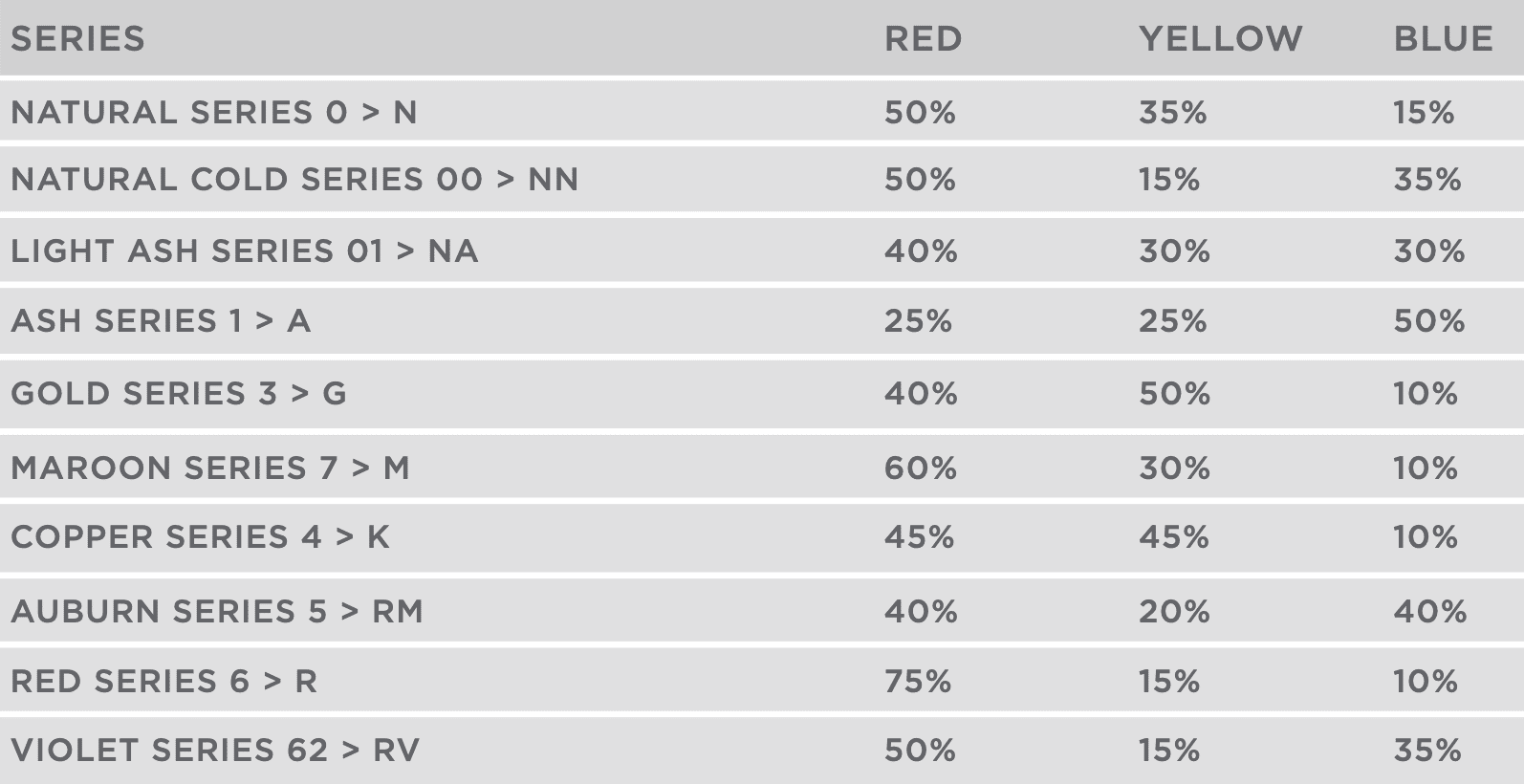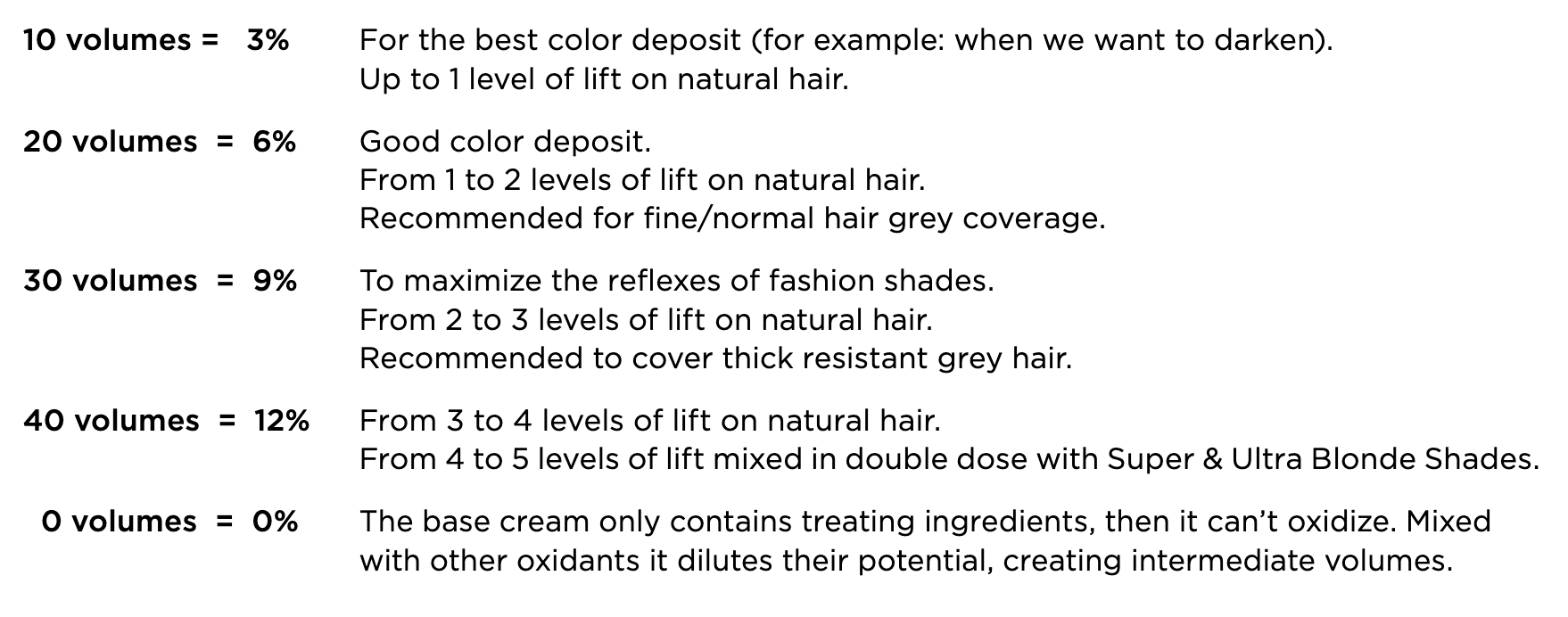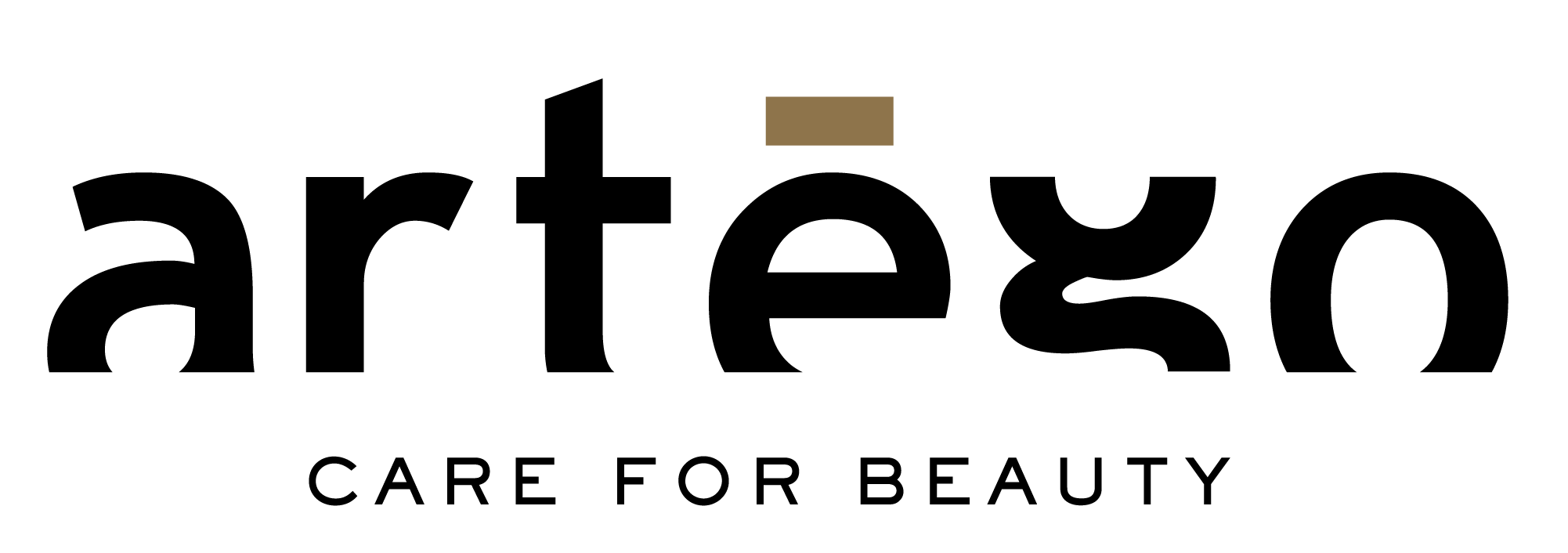It’s Color is made of two main color components that act in the coloring mechanism:
- Color Cream
- Peroxide
In It’s Color Color Cream, we can find:
Base Cream
Creamy emulsion composed of demineralized water, mineral oils and coconut oils, kept firmly together by surfactants and emulsifiers thanks to their double polarity, hydrophilic and lipophilic. Furthermore, we find vegetable and mineral origin elements next to special synthesis molecules that:
- Contribute to release (together with ammonia) the maximum possible quantity of hydrogen peroxide from the developer inside the color mix, so that pigments are completely oxidized and colored (up to 99%).
- When compared to many competitors, the ammonia level is adequate enough in each level to oxidize the color molecule.
- Enrich the hair with hydrating, softening and structure preserving substances, such as some amino acids precursors, purified lanolin, mineral oils, milk and coconut oil.
- Balance the hair throughout its length from an electrochemical point of view (thanks to an amphoteric molecule).
Considering the ingredients that are used in the base cream formulation, we can state that It’s Color ensures maximum protection and cosmeticity; it makes the hair healthy and shiny with natural and uniform color results, from root to tip. The choice of a fluid cream as vehiculating agent, easily penetrating the strand and firmly sticking to the hair, makes mixing and application easy.
Pigments
Sourced from renowned international companies and subjected to constant quality control:
- Balanced and accurate formulations that maximize their function avoiding squandering and overlapping that may matte color’s final result.
- Poised mix of 8/15 different pigments for each shade (while competitors use 4-8 on average), that give color personality, uniqueness and profundity, for a Mediterranean sunny color taste.
- The attention we use to prepare the pigment mix ensures us unique and original reflexes, really close among them and to the natural series, but different enough that the customer can tell them apart (alternative natural: bronze .41, chroma .16, special browns .7 and .71). This way the professional colorist can offer valid and diverse color proposals to those customers who want an innovative yet not eccentric color.
- Minimum dimension of the pigments molecule prior to oxidation.
For all these reasons It’s Color ensures precise and accurate color results (when compared to the color chart), with significant reflexes right from lower levels (for instance, 3.16 and 3.7). Pigments penetrate in depth in the cortex and this ensures the best color durability, while their oxidation (up to 99%) during developing time makes color stable and accurate, loyal and identical over and over.
To better understand It’s Color pigments mix and taste, let’s divide all the pigments types in 3 groups, corresponding to the 3 primary colors: red, yellow and blue.
The following chart describes how, in percentage, the 3 colors vary in the main series – considering an intermediate color level.

All the other series can be considered intermediate, and complementary to the above mentioned ones. Here are some essential considerations on some important It’s Color series:
- NATURAL .0 > N and COLD NATURAL .00 > NN series are designated to the best grey hair coverage, while in the fashion shades (gold, copper, red, etc.) the reflex prevails over the coverage. Hence, to cover high grey hair percentages, it is recommended to mix fashion shades with natural or cold natural tones.
- COLD NATURAL .00 > NN and ASH .1 > A may appear to be more intense than the corresponding levels from other series.
- COLD NATURAL .00 > NN series was formulated to ensure a ‘colder coverage’ and cool down the highlifting residual warm reflexes.
- ASH .1 > A series must be considered as a reflexed series (as well as gold, red and copper series), and it has a limited grey hair coverage potential.
- The special NEUTRAL cream is made exclusively by Neutral base cream (without pigments or ammonia) and can dilute the pigments and the ammonia concentration of the shades it is mixed with. It is enriched with Decyl Oleate, extracted by coconut oil.
- The Extra Blonding Cream Neutral is made by base cream and ammonia. It enhances the lifting power of the shade it is mixed with.
- The Extra Blonding Cream Light Blue, beyond enhancing the lifting power of the shade it is mixed with, can neutralize residual warm reflexes.
Ammonia
It is used in the strictly needed percentage for every level (30% less than competitors), and it has been chosen as alkaline substance, essential in a color mix, thanks to its volatility (it stays on the hair as little time as possible). Some more information:
- We use a pure product, not a derivative of previous manufacturing cycles;
- The mixing with It’s Color O2 peroxide ensures quick volatility right from the preparation step;
- It’s Color works perfectly even in a slightly alkaline environment (pH 9/10);
It’s Color oxidant is the creamy 02 peroxide, especially formulated to be mix perfectly with it’s Color cream. Its average pH value is around 2.5 and it is mixed:
- with standard shades in a 1:1 proportion (1 part of cream + 1 part of O2 at 10 Vol. / 3%, 20 Vol. / 6%, 30 Vol / 9%, 40 Vol. / 12%);
- with Super&Ultra Blonde shades in a 1:2 proportion only with O2 at 40 vol. / 12% (1 part of cream + 2 parts of 40 Vol. / 12 % O2.
It is formulated with 2 components: the base cream and the oxidant (hydrogen peroxide).
Base Cream
Emulsion made of demineralized water and fat substances/oils kept together by surfactants and emulsifiers with double polarity. Among the last ones, we remember:
- Treating substances that protect the hair structure preserving its softness and elasticity.
- Balancing substances, to keep the original hydrogen peroxide percentage unchanged, avoiding evaporation. These substances block the oxygen molecules in a chemically unstable state, so that they are more easily available in a low alkaline environment (that’s why we use a lower ammonia percentage in the mix).
Oxidizing Element
Hydrogen peroxide, in the most commonly used percentages – detailed below with the corresponding indications of use:


